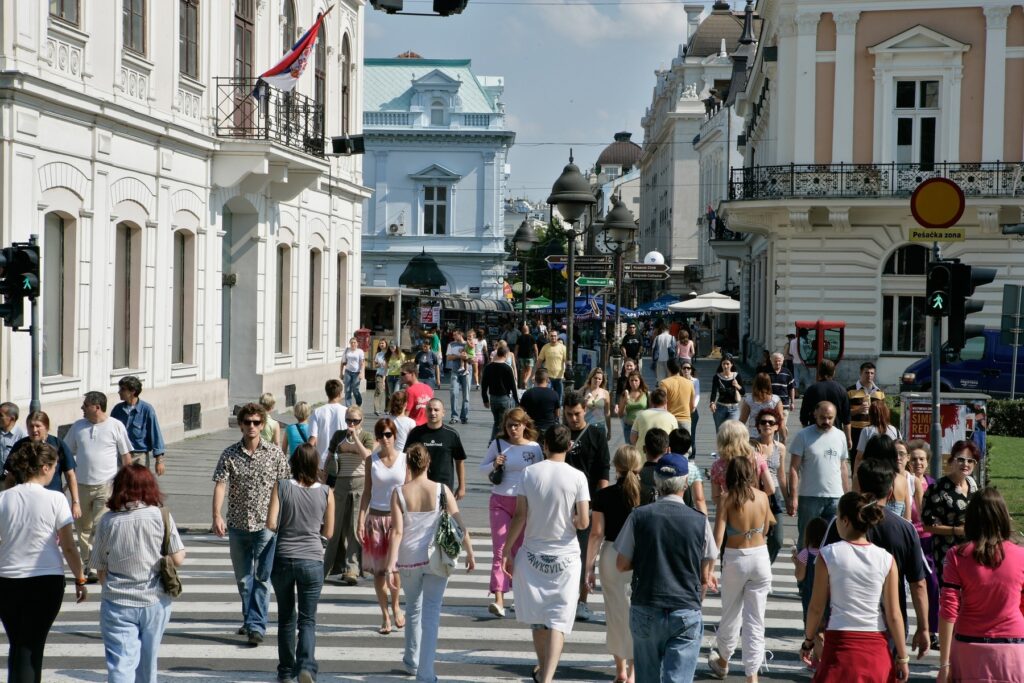In Serbia, the majority of residential properties are two-bedroom apartments (35.9%), followed by three-bedroom apartments (30.8%), four-bedroom apartments (21.7%), and one-bedroom apartments (9.4%), according to an analysis of household structures by the Statistical Office of the Republic of Serbia (RZS).
When it comes to heating, 20.1% of households in Serbia use central heating via district systems, 14.2% rely on electricity, while as many as 48.5% use solid fuels.
Commenting on housing conditions in Serbia, Marko Aksentijević, programme coordinator at the Ministry of Space organisation, told Biznis.rs that the structure of an apartment does not reveal much without considering the number of household members. He emphasised the need to assess whether there is enough space for everyone living in the home.
“Eurostat, the European Union’s statistical agency, defines an overcrowded home as one that lacks a separate room for each couple, each person over 18, up to two children of the same sex aged 12 to 17, and up to two children under 12. Based on this definition, overcrowding in the EU stands at 16.8%, while in Serbia it is three times higher—49.7%. This means that every other person in Serbia lives in an overcrowded household,” said Aksentijević. He added that the situation is similar to that of heating.
“Research by the RES Foundation shows that 41% of respondents live in homes where only the most frequented rooms are heated. These are typically households that use solid fuels, which not only fail to provide adequate heating but also pollute the indoor air due to poor-quality equipment. According to research, our organisation conducted a few years ago in Belgrade, where housing conditions are generally better than in the rest of Serbia, problems like dampness (7.2%) and poor lighting (4.4%) were noted. However, the primary issue remains the high housing costs, including maintenance, heating, and utilities, which 78.4% of respondents described as excessive relative to their household income,” Aksentijević explained.
According to the latest RZS data, the average monthly income of Serbian households in 2023 was 85,466 dinars. The largest portion of this was spent on food and non-alcoholic beverages (36.8%), while housing, water, electricity, and heating accounted for 16.4%.
Given these figures, one must question how the average citizen can afford to buy property, especially as prices remain stubbornly high.
Marko Aksentijević responded that the possibilities are virtually non-existent and that there’s no need to delve deeply into statistics to illustrate this point. “It’s enough to consider the mismatch between average incomes and property prices per square metre.
“Conventional wisdom suggests that if buying an average newly built apartment requires more than four years of average salaries, the government should intervene to make housing more affordable. In Serbia, this ratio has been above ten years of average salaries for quite some time, yet there’s no sign of a housing strategy or policy. Most people who aren’t in the wealthiest 10% rely on inheriting property or financial support to secure a home,” he said.
“Eurostat data from two years ago showed that Serbia’s tenants were the most burdened in Europe, with half of them living in households that spent over 40% of their income on housing costs. Since then, the situation with rental prices has only worsened,” he added.
“We have been witnessing a construction boom in Serbia for some time now, but it does not address the overcrowding in existing homes or improve housing conditions for the majority. Instead, properties are being used as investment vehicles by wealthy locals, the diaspora, and foreigners. As long as the government encourages this approach, fails to scrutinise the origin of funds, and issues building permits with minimal oversight, there is little hope for those outside the wealthiest social strata. Once our society recognises that housing is a fundamental issue for communal life, significant investment will be needed to expand and improve the housing stock that people actually live in,” Aksentijević concluded.
(Biznis.rs, 26.11.2024)
This post is also available in: Italiano
Source link : http://www.bing.com/news/apiclick.aspx?ref=FexRss&aid=&tid=6746f51d95ea4d9b84033295cdcdf721&url=https%3A%2F%2Fwww.serbianmonitor.com%2Fen%2Fhalf-of-serbias-population-lives-in-overcrowded-homes%2F&c=4737101290849224646&mkt=de-de
Author :
Publish date : 2024-11-27 02:00:00
Copyright for syndicated content belongs to the linked Source.
